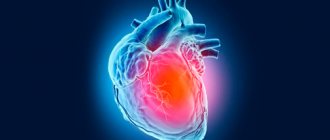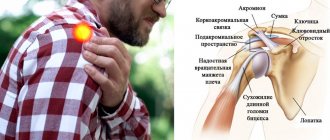The human ear can detect sounds whose frequency varies from 16 to 20,000 vibrations per second.
Infrasound is a low-frequency sound wave (that is, with a frequency below 16 vibrations), ultrasound is a high-frequency sound wave with a frequency of over 20 thousand vibrations. They are not perceived by the human hearing aid and require the use of special instruments to detect them.
It was the huge number of studies that analyzed the signs of a sound wave and the effects of ultrasound that contributed to the emergence of prerequisites that made it possible to use ultrasound on a large scale in various industrial sectors, in the production of certain medicines, in medicine, physics, modern military technology, biology, the national economy and everyday life. life. Let's take a closer look at the effect of ultrasound on the human body.
What is ultrasound?
The influence of ultrasound and infrasound on the human body is unique. Ultrasound is a high-frequency sound wave that can propagate in solid materials, liquids and gases due to the influence of elastic forces. The origin of ultrasound can be either natural or artificial. Thus, in nature there are sensory organs that make it possible to reproduce and receive vibrations generated by an ultrasonic wave, for example, in dolphins, bats, butterflies, whales, locusts, grasshoppers, crickets, certain species of fish and birds.
Thanks to this, they are able to perfectly navigate in space, including at night, and also communicate with their relatives. Dolphins and whales can send the necessary signals over tens of thousands of kilometers. In addition, dogs and cats can detect ultrasound. The intensity and speed of propagation of ultrasound are directly affected by the characteristics of the substance in which it is transmitted: if it moves away from the source in the air, the sound weakens quite quickly. In liquids, as well as when passing through a solid, the strength of ultrasound decreases slowly. What is the effect of ultrasound on the human body?
Devices for repelling animals and insects
The areas of ultrasound treatment and its application in industrial processes are studied by specialists with specialized education. In everyday life, such information is usually uninteresting. The average person is closer to the opportunity to get rid of pests without chemicals, using a means that is safe for loved ones. This is what ultrasound equipment is. It works silently, with low power consumption and at the same time is highly effective in the fight against various scourges.
Features of devices for repelling cats, rats, dogs and insects with ultrasound:
- mainly require a permanent connection to the power supply network;
- For each type of living creature that you want to get rid of, you need a separate solution;
- Sometimes people do hear a continuous squeaking sound coming from the equipment.
In any case, it is not without its drawbacks. Pets (dogs, cats, guinea pigs, etc.) react negatively to the use of ultrasonic repellers at home. Sometimes people feel the same signs. These are headaches, insomnia at night, drowsiness during the day, irritability or general depression of the nervous system. You can get rid of such consequences only after turning off the device.
Difference from normal sound
It differs from ordinary sound in that it travels in all directions from the source. Ultrasound is essentially a wave in the form of a narrow beam. Such features make it possible to use it for exploring the sea and ocean floor, detecting sunken ships and submarines, as well as various obstacles under water, and accurate distance.
But when propagating in water, ultrasonic waves can cause harm to the organisms that live in it. Under the influence of ultrasound, the fish's sense of balance is disturbed; they float to the surface of the water with their bellies up, and therefore cannot assume their normal position. If exposure to ultrasound is intense and prolonged, exceeding acceptable limits, it will ultimately cause very serious damage and even death to fish. If its influence is temporary and the intensity is not too high, after its cessation the lifestyle and behavior of the fish return to their usual framework.
Effect of ultrasound on the human body
Ultrasound affects the human body in a similar way. During the experiment, water was poured into a cupped palm, after which the subject immersed it in the ultrasonic space. At the same time, he experienced painful and unpleasant sensations. Not everyone knows what effect ultrasound has on the human body.
It is worth noting that the essence of the biological influence of ultrasound is still not fully understood. But more likely it is based on local pressures arising in the tissues, as well as a local thermal effect, which is directly related to the energy absorption that occurs when vibrations are suppressed. Since gaseous and liquid media are capable of excellent absorption of ultrasound, while solid substances conduct it, the skeletal system of the human body is also a good conductor. Ultrasound exposure in the human body primarily provokes the appearance of a thermal effect, which is a consequence of the energetic transformation of the ultrasound wave into heat. What else do you need to know about ultrasound and its effect on the human body?
Ultrasound concept
The possibilities of using ultrasound were studied back in the 19th century. Then two groups of scientists - from England and France - were studying the propagation of various waves in water. In 1883, the first device that operated in the ultrasonic range (whistle) appeared. Around this time, the Curie brothers developed compact piezoelectric resonators. This marked the beginning of the creation of small-sized equipment.
Historical milestones in work on ultrasound devices:
- 1916 - release of the first echo sounder based on quartz elements;
- 1928 - beginning of use in flaw detection to identify cracks and cavities;
- 1936 - first experiments in ultrasonic welding of materials;
- 1937 - attempts to use it to detect brain tumors.
Since the 50-60s of the 20th century, the properties of this type of sound waves have been studied so much that they began to be used literally “everywhere”. For example, they created ultrasonic cleaning devices to remove dirt and old paint. The surface after such treatment retains its original appearance, and no abrasive substances are required for operation. The situation is similar with the inclusion of ultrasound from rats - the rodents leave the room without the use of poisonous agents.
Stimulates blood circulation
In addition, it causes microscopic stretching and contraction of the tissue (this is called micromassage), and also stimulates blood circulation. In this regard, there is an improvement in the functioning of various tissues of the human body and blood flow. In addition, ultrasound can have a stimulating effect on the course of metabolic processes and reflex nervous action. It promotes changes not only in the organs it affects, but also in other organs and tissues.
Harm of intense influence
In this case, intense and prolonged influence destroys cells and leads to their death. This is due to the fact that cavities are formed in body fluids under the influence of ultrasound (this phenomenon is called cavitation), which causes tissue death. An ultrasound wave can also destroy many microorganisms, and this helps inactivate viruses such as encephalitis or polio. The effect of ultrasound on protein causes a disruption in the structure of its constituent particles and their further disintegration. In addition, it destroys red and white blood cells in the blood, its coagulability and viscosity increase significantly, and ROE also accelerates. The ultrasound wave has a depressing effect on cellular respiration, reduces the amount of oxygen consumed by it, and causes the inactivation of a number of hormones and enzymes.
So the effect of ultrasound on the human body is still not very good.
Chapter 3. Experimental part
Sound level meters are used to measure noise levels using an objective method. In these devices, noise is perceived using a broadband microphone, which converts sound vibrations into electrical vibrations. The latter are amplified and fed to the rectifier of the pointer instrument (meter).
We measured the noise level using the second method. We used two sound level meters installed in a mobile phone, thanks to the “Sound Level Meter” and “Sound Meter” applications.
The results of the study show that the permissible noise level in classrooms is exceeded. The noise level in the music room and gym is also significantly higher than the permissible level. In the corridors during breaks and in the cafeteria during meals, the noise level is close to the permissible norm.
3.1 Types of noise sources at school
During our observations, we found that the main sources of sounds and noise at school are conversations of teachers, students, shouting, bells (to and from class), computers, music at a disco, cell phones, headphones from cell phones, players, stereo systems , radios, tape recorders.
3.2 The influence of acoustic phenomena on the condition of students
Long-term exposure to noise affects the psychological state: students report complaints of fatigue, decreased attention, concentration and performance, deterioration of mood, sleep disturbance, general weakness, and increased irritability.
Many children like loud noises. Many children are annoyed by loud conversations, laughter, screams, noise, sounds of games on the computer, loud music, etc. Most students are aware of the negative impact of sound on health. Some students are unaware of the harmful effects of noise on health. Many agreed that noise causes fatigue after school and can cause illness.
Consequences for the human body
High-intensity ultrasound can cause the following effects in humans:
- the appearance of increased pain syndrome;
- baldness;
- hemolysis;
- clouding of the lens and cornea of the eye;
- increase in the content of lactic and uric acid, cholesterol in the blood;
- small hemorrhages in a number of organs and tissues of the body;
- significant hearing defects;
— pathological formation and destruction of bone tissue;
- destruction of nerve cells and cells of the organ of Corti. These are the main diseases caused by exposure to ultrasound.
As a result of prolonged exposure to ultrasound, excessive drowsiness, dizziness, high fatigue, symptoms of vegetative-vascular dystonia (sleep disorders, memory defects, apathy, indecision, decreased appetite, fearfulness, tendency to depression, etc.) appear.
Where is the effect of ultrasound on the body most often used?
Non-thermal effects
The non-thermal effects of ultrasound have been studied in vitro (“in vitro”). These include:
- Increasing the rate of reverse development of inflammation;
- Acceleration of fibrinolysis (that is, the destruction of a blood clot);
- Stimulation of the activity of fibroblasts (connective tissue cells), activation of protein biosynthesis, tissue regeneration, healing of bone fractures, activation of angiogenesis (growth of new vessels);
- Increasing the density of collagen fibrils (a component of connective tissue);
- Increased tendon extensibility.
Use of Ultrasound in Medicine
The therapeutic effect of ultrasound is due to its ability to penetrate tissue, warm it up and provide micromassage. It should be noted that ultrasound probably has a number of specific effects, since deep heating of tissues is achieved through other methods, but a positive effect in some cases occurs only after using ultrasound.
Taking into account the reflex mechanism, ultrasound can be used not only to directly influence the epicenter of pain, but also to influence it indirectly.
Thanks to the properties mentioned above, ultrasound, under a number of conditions, can have a bactericidal, antispasmodic, anti-inflammatory and analgesic effect. The use of ultrasound can be combined with other therapeutic techniques. Due to increased biological activity, care must be taken when treating with ultrasound. Positive results from its therapeutic use have been obtained in a number of diseases. It is very effective in the treatment of neuralgia, myalgia, neuritis of amputated limbs, periarthritis, arthritis and arthrosis. Many people are interested in whether ultrasound is harmful to humans.
External shock wave lithotripsy
Surgical removal of a stone from the kidney or ureter is an extreme measure, which is now resorted to only in exceptional cases. Preference today is given to low-traumatic methods of crushing stones. One of the most promising methods for treating urolithiasis today is external shock wave lithotripsy. Impulses freely penetrate through the surrounding tissues, and energy transfer occurs only in the focal area - the “working spot”. This causes a gradual “loosening” and destruction of the crystal lattice of a kidney stone or other stone. As a result of this treatment of the disease, one large stone breaks up into a number of smaller fragments, which are eliminated naturally.
Overall Impact
The general effect of ultrasound on the human body is confirmed, in particular, by the fact that when a number of joints are affected, it is often enough to limit the therapy to one of them, since there is a parallel improvement in the remaining joints. Positive results were obtained in the treatment of spondylitis, ankylosing spondylitis, varicose, flaccid granulating and trophic ulcers, and obliterating endarteritis using ultrasound.
There are separate indications of the positive use of ultrasound in bronchial asthma, duodenal and gastric ulcers, bronchiectasis, pulmonary emphysema, Meniere's disease and otosclerosis. There are also observations that indicate that preliminary skin scoring enhances the effectiveness of X-ray irradiation.
Contraindications to the use of ultrasound
It is forbidden to voice the genitals, growing bones, tumors, heart areas (this can cause angina pectoris). In case of hypertension, pulmonary tuberculosis, pregnancy, hyperthyroidism, changes in parenchymal organs, the use of ultrasound is also contraindicated. If it is used on an ever wider scale, it is necessary to organize careful monitoring of patients who come into contact with ultrasound in order to identify early symptoms of the disease and carry out the required preventive and therapeutic measures in a timely manner. There is also evidence of the positive effect of ultrasound on some forms of neuritis and cancer. But the width of the safe area between the positive and damaging effects has not yet been determined with precision.
We examined the effect of ultrasound on the human body.
Is ultrasound dangerous for humans?
The question of the dangers of ultrasound irradiation is often raised. An example is the usual reaction of babies to ultrasound examinations - many begin to toss and turn and try to shield themselves from the radiation with their hands. It is not recommended to avoid the event, because due to the constant speed of ultrasound, the location of the fetus and the absence (presence) of congenital diseases are determined. The same conversations arise when seeking services like ultrasound removal of acne. Or treatment of joints, stomatitis, stomach ulcers.
The truth about the dangers of ultrasound radiation:
- real negative consequences occur with prolonged exposure;
- pain effects occur only when the sound pressure level exceeds 90–120 dB;
- Ultrasound examination and treatment are contraindicated for certain diseases.
If you use technology after consultation with your doctor, problems usually do not arise. In everyday life, it is recommended to use factory-made devices, which necessarily take into account the limits on radiation power.









